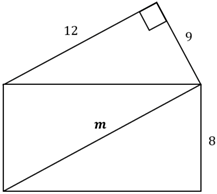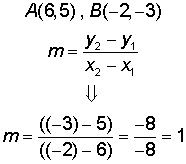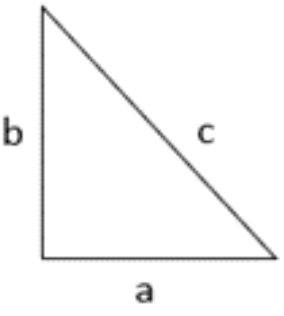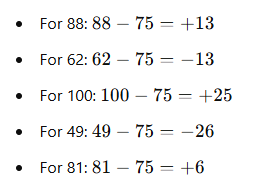The Postsecondary Education Readiness Test (PERT) is a computer-adaptive exam used in Florida to evaluate your readiness for college-level coursework. It assesses skills in mathematics, reading, and writing—each determining your course placement. This guide provides everything you need to succeed!
What Is the PERT Test?
The PERT isn't about passing or failing—it's about finding the right courses for your current skill level in math, reading, and writing.
Sections of the PERT Test
The PERT consists of three sections:
- Mathematics: Covers pre-algebra, algebra, and geometry.
- Reading: Measures comprehension and analysis skills.
- Writing: Evaluates grammar and writing proficiency.
Each section contains 30 questions, with 25 scored questions and 5 experimental ones that do not count toward your score. The test is computer-adaptive and untimed, allowing you to focus on accuracy.
Pert Math Practice Test
The math portion of the PERT evaluates your proficiency in various algebraic and geometric concepts. This section tests your ability to work with equations, evaluate algebraic expressions, manipulate polynomials, and understand coordinate planes. You'll encounter questions requiring you to divide by monomials and binomials, apply standard algorithms, and solve systems of linear equations.
- Algebra and equations
- Polynomials and factoring
- Coordinate geometry
- Basic data analysis
- Algebra: Solving linear and quadratic equations like c + (4 – 3c) – 2 = 0
- Polynomials: Factoring expressions like x² – x – 6
- Geometry: Graphing, finding slopes, and solving simultaneous equations
- Problem-Solving: Applying math to real-life scenarios
- Score 114-122: Qualifies for Intermediate Algebra
- Score 123+: Access to additional math courses
PERT Math Practice Test Questions
PERT Test Math Question #1
What is the equation of a line which cross the points: A(6,5) and B(-2,-3)?
Finding the length of a rectangle’s diagonal involves using the Pythagorean theorem. This question assesses your ability to apply geometric principles and solve problems related to shapes and their properties.
PERT Test Math Question #2
Use the image of the triangle and rectangle below to answer the question.

What is the length of the rectangle's diagonal (m)?
More PERT Math Practice Tests
Struggling with PERT Math? Master equations, geometry, and algebraic concepts in our comprehensive PERT Math PrepPack section. Don't let formulas and calculations hold you back from college placement. Boost your score today!
Finding the length of a rectangle’s diagonal involves using the Pythagorean theorem. This question assesses your ability to apply geometric principles and solve problems related to shapes and their properties.
PERT Test Math Question #3
Sarah wants to build eight identical wooden chairs for the new dinner table in her house. One pound of wood costs three and a half dollars. She uses sixteen and a half pounds to build three chairs.
How much will it cost her to build all the chairs she wants?
Even though it’s presented in the context of an English exam, this question asks you to calculate a score based on the mean. It examines your understanding of averages, a common topic in basic statistics.
PERT Test Math Question #4
Look at the scores of the final English exam. The scores for five students are given below. If the mean (average) score of all six students is 75, what is David’s score?
Student 1: 88
Student 2: 62
Student 3: 100
Student 4: 49
Student 5: 81
David's score: Unknown (x)
PERT Math Tip – Master the basics
While there are quite a few quick and effective solving techniques – none replace the importance of knowing the basic mathematic principles. In the question above, using Pythagoras's Equation is essential, as well as the geometrical understanding of the characteristics of a rectangle.
- Personal calculators are not permitted during the PERT test.
- However, for certain math questions, a built-in, on-screen calculator will be provided within the testing platform.
- This calculator is typically a 4-function calculator and will only appear when allowed for specific questions
Pert Reading Practice Test
The Reading section assesses your comprehension abilities and analytical skills when working with written texts. You'll be challenged to identify main ideas, discern relationships between sentences, and distinguish between factual statements and opinions.
- Finding main ideas and summarizing key points
- Distinguishing facts from opinions
- Evaluating the author's tone and purpose
- Understanding vocabulary in context
- Comparing different texts on similar topics
- Highlight important details while reading
- Practice summarizing paragraphs
- Join study groups to discuss different interpretations
- Use diagrams and mind maps for complex passages
Score 106+: Avoids remedial reading and qualifies for Freshman Composition
PERT Reading Practice Test Questions
This item requires you to infer from the passage. It tests your ability to draw conclusions based on the information provided.
PERT Test Reading Question #5
Antonio Vivaldi was an 18th century Italian composer, violinist, teacher, and Catholic priest. He is recognized as one of the greatest Baroque composers, and his influence during his lifetime was widespread across Europe.
He is known mainly for composing many instrumental concertos for the violin and a variety of other instruments, as well as more than forty operas. His best-known work is a series of violin concertos known as The Four Seasons. Despite his prolific career, Vivaldi died in poverty.
From this passage, one may conclude that Vivaldi ______
This question focuses on distinguishing factual statements from opinions. It asks you to recognize which sentence expresses a judgment rather than a verifiable fact, a critical reading skill.
PERT Test Reading Question #6
Little benefit is expected from climate change, but scientists have found at least one species that seems to be better off in a rapidly warming world. The Brown Argus butterfly has increased its range in England northward by about 50 miles over the past two decades. While not unexpected—many species have already responded to recent warming by moving—what makes the Brown Argus butterfly different is that the change in range has actually benefited the species.
In its caterpillar form, the Brown Argus feeds off wild geranium plants, but only in warmer summers—which is exactly what’s been happening in England and much of the rest of the world thanks to climate change. Over the past 20 years, the Brown Argus, which was considered scarce in the 1980s, has spread northward and now flourishes in much of southern England.
As David Roy of the Centre for Ecology and Hydrology in the U.K. put it, "The change in diet represents a change to the interactions between species—in this case between a butterfly and the plants that its caterpillars eat—caused by climate warming. Changes to the interactions between species are often predicted to alter the rate at which species shift their distribution in response to climate change; and now we have demonstrated this in nature."
But the Brown Argus butterfly is likely to be the exception to climate change, not the rule. Past periods of sudden climate change in the earth’s history have led to a reduction in biodiversity and even great extinction waves. If warming keeps up at the expected rate—and we’re doing little to slow it down—far more species will suffer.
On the other hand, mostly in regard to mourning days initiated by the people, such as the day of Princess Diana’s funeral in the UK, they reflect a spontaneous bout of pure grief, sometimes manifested in the closing of shops and banks and the cancellation of sports and theater and cinema showings.
Which of the following sentences contains an opinion?
PERT Reading Tip – Read the questions first
This tip is probably more useful with a narrow time limit – but it is still quite useful in every reading question – either short or long. The basic is, that when you read the whole text first and then the question – you may be distracted and confused from the information you had just read. By starting from the question – you can continue to read the text, but this time with a knowledge of what you are looking for, different clues in the text can easily provide the answer. Continue below and attempt to use this tip for the following questions regarding the text above.
This question asks you to select the statement that best captures the overall message of the passage. It examines your ability to determine the main idea, a fundamental component of reading comprehension.
PERT Test Reading Question #7
Answer the following question according to the passage above.
Which of the following statements best encompasses the main idea of the passage?
This item asks you to identify the organizational pattern of a paragraph (in this case, the text structure). Recognizing whether a text is structured by sequence, problem–solution, definition–example, or cause–effect helps in understanding the author’s approach.
PERT Test Reading Question #8
Which of the following best describes the text structure of the first paragraph?
More PERT Reading Practice Tests
Finding it hard to identify main ideas or analyze passages? Our PERT Reading PrepPack section helps you strengthen comprehension skills with practice questions and detailed explanations. Improve your reading score and secure better course placement!
While the PERT Reading section tests a variety of comprehension, critical, and verbal skills – all the questions are related to different texts. Therefore, it is essential to read, a lot, ahead of your test. Let's continue to the final section of the PERT – the Writing section.
PERT Writing Practice Test
The Writing section evaluates your knowledge of writing conventions and your ability to construct coherent, grammatically correct prose. This section tests punctuation, capitalization, verb agreement, word choice, and tense usage. Rather than requiring you to produce written content, the PERT assesses your understanding of writing principles through multiple-choice questions.
- Grammar, spelling, and punctuation
- Sentence structure and clarity
- Thesis development and argumentation
- Organization and logical flow
- Work on sentence corrections
- Identify irrelevant sentences in passages
- Complete passages with the best word choice
- Get feedback from peers on your writing
Score 103+: Qualifies for Freshman Composition Skills (also need Reading 106+)
PERT Writing Practice Test Questions
This question tests your ability to identify grammatically correct sentence construction, focusing on subject-verb agreement and proper sentence structure.
PERT Test Writing Question #9
Which of the following sentences is grammatically correct?
This question evaluates clarity in pronoun usage by asking you to spot a sentence with a vague or ambiguous pronoun reference.
PERT Test Writing Question #10
Which of the following sentences includes an example of vague pronoun use?
PERT Writing Tips:
- Check for Common Errors: Watch out for common grammatical errors such as incorrect verb forms, misplaced modifiers, and incorrect pronoun use. For example, "Here is the books you were looking for all morning" is incorrect because "books" (plural subject) should be paired with "are" instead of "is."
- Simplify Complex Sentences: Break down complex sentences into simpler parts to check for grammatical correctness. This helps in identifying errors more easily. For example, in the sentence "It isn’t wise to have a tank of fish without a filter because it will get dirty," consider what "it" refers to and whether the sentence structure conveys the intended meaning.
Next are additional questions like in the PERT Writing section, where you can practice those tips and find additional explanations.
Here, we have a question that assesses your understanding of capitalization rules, particularly for titles of works, ensuring you know which words should be capitalized.
PERT Test Writing Question #11
Which title of a work of art is capitalized correctly?
Finally, we have a question that checks your vocabulary and spelling skills by requiring you to choose the correctly spelled word.
PERT Test Writing Question #12
Choose the word that is spelled correctly.
More PERT Writing Practice Tests
Grammar mistakes costing you points? Our PERT Writing PrepPack section covers punctuation, sentence structure, and proper word usage through targeted practice. Perfect your language skills and achieve the writing score you need!
More About the PERT Test
- The PERT Test is not a pass/fail assessment. Rather, the results will determine student's placements in college courses.
- The test is not timed but must be completed the day you start.
- Depending on the college you're applying to, you might be allowed up to 3 attempts to take and improve your scores on the PERT Test.
- Some colleges offer on-campus testing while in other cases you will have undergo virtual testing. Either way, the PERT Test will be the same.
Understanding PERT Scores
How Scoring Works
- Score Range: Each section (Math, Reading, Writing) is scored from 50 to 150
- Adaptive Testing: The difficulty of questions adjusts based on your performance
- Scored Questions: Though each section has 30 questions, only 25 count toward your score (the other 5 are experimental)
- No Penalty: There's no penalty for wrong answers, so always make your best guess
What Your Scores Mean
PERT Score Impact
Developmental Courses: Scoring below the college-ready threshold means taking additional courses that don't count toward your degree but do cost time and money
Dual Enrollment: Specific score requirements must be met to participate in dual enrollment programs while in high school
Course Placement: Your scores determine which courses you can register for in your first semester
Retaking the Test
You can typically retake the PERT after 30 days if you're not satisfied with your scores
Many colleges allow multiple attempts, but check your institution's specific policies
Focus your studying on areas where you scored lowest for the best improvement
Access Your Complete PERT Test PrepPack
Don't leave your college placement to chance! Our complete PERT Test PrepPack includes hundreds of practice questions, full-length simulations, and expert tips for all three sections. Prepare effectively and start college with confidence.
PERT Testing FAQ's
The Postsecondary Education Readiness Test (PERT Test) is an assessment used by academic institutions in Florida to evaluate a student's readiness for college-level coursework. Unlike traditional tests, the PERT is adaptive, adjusting the difficulty of questions based on the student's performance as they progress. This helps determine the most suitable level of coursework for each student. The test consists of 90 questions across three sections: Mathematics, Writing, and Reading, and it is untimed, allowing students to work at their own pace. The PERT does not have a formal score, but the results play a crucial role in course placement.
Calculators are not generally allowed. The test is designed in a way that the math problems can be solved without a calculator.
However, for certain math questions, a pop-up calculator is provided on the computer screen within the test interface.
This means that when you take the PERT you can use this on-screen calculator for specific questions where it's deemed necessary, but you cannot bring your own calculator into the test.
The Postsecondary Education Readiness Test (PERT) is untimed, allowing test-takers to work through the questions at their own pace.
However, the average time to complete the test is usually around three hours.












